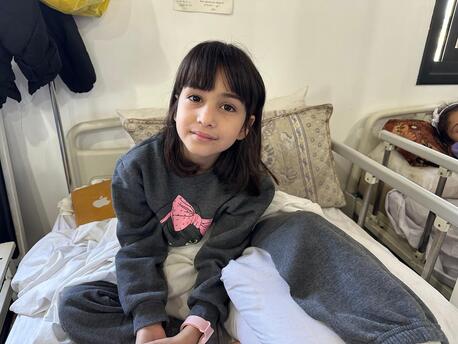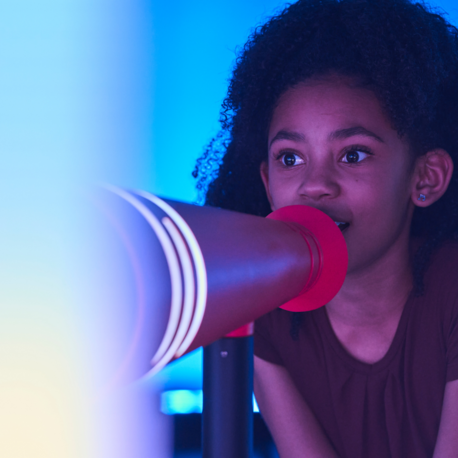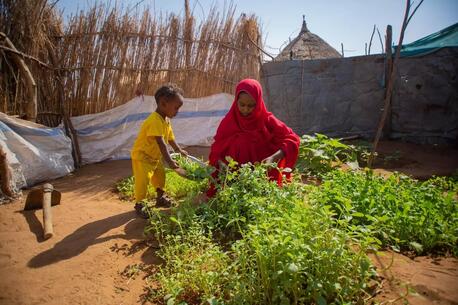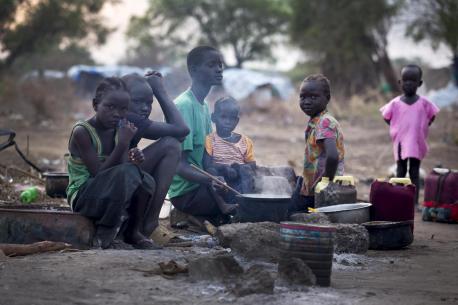
Inside South Sudan: Q&A with UNICEF’s Kent Page
Kent Page is UNICEF’s senior communications advisor for emergencies. He was recently posted to South Sudan, where more than 1.3 million people, half of them children, have been displaced since December 2013.
Can you describe your mission in South Sudan?
KENT PAGE: I was on an emergency communication mission for six weeks—in Juba, the capital and other areas. I went to Minkaman on the Nile River. It was just a tiny fishing village a few months ago. Now it’s jammed with thousands of families fleeing the violence. I also traveled to Bentiu, in Unity state, probably the hottest part of the country right now in terms of conflict. While I was in Juba, UNICEF was leading the emergency response to the cholera outbreak.

Why is famine a real threat?
"Because of the violence and the displacement, people can't plant food."
PAGE: Because of the violence and the displacement, people can’t plant food for the harvest season. Markets don’t have the amount of food they would normally have, so prices go up. At the same time, people are displaced. They aren’t working, they don’t have money, they can’t pay for the limited food that exists.
Why is this such a dire emergency for children?
PAGE: Before the crisis, South Sudan already had very, very high rates of child malnutrition. And then there’s the added layer of disease. Children who are weak from hunger are at greater risk for acute respiratory infections, measles, cholera and malaria. Unless nutrition treatment is scaled up immediately, up to 50,000 children will die of malnutrition. In addition, there are about 3.7 million people in South Sudan who are currently at very high risk of food insecurity. Among them are 740,000 children under the age of five.

Is there any food in these camps? What are people eating?
"Children who are weak from hunger are at greater risk for...measles, cholera and malaria."
PAGE: South Sudanese people are eating whatever they can find, wild vegetables and fruit, roots and grasses. In the camps, there’s food, but the food there might not give you all the nutrients that people need.
How does the rainy season affect the situation?
PAGE: The rainy season is both a curse and a blessing. It’s a curse because waterborne diseases like malaria and cholera increase, and we’ve already seen a cholera outbreak. And in the rainy season, transporting food is very difficult. On the other hand, if there’s not enough rain—and that, in fact, is the predicted situation for the rest of this year—any harvest that may have been planted won’t get adequate rainfall.

What is UNICEF doing to help?
PAGE: UNICEF is reaching children with micronutrients and ready-to-use therapeutic food. We’re supplying the measuring tapes used to screen children for malnutrition, the long measuring boards to get the height of children, the scales that weigh the children to find out their nutritional status and their state of health.
"People are eating whatever they can find."
We also provide a lot of tents, very important at sites for displaced people. During the time I was there the weather was, on a daily basis, about 40 degrees Celsius (104 Fahrenheit). These sites have virtually no trees, no shelter from the sun. We provide tents to our partners to use as nutritional treatment centers. It’s clean. Desks can be set up. Medicine can be stored. Doctors and nurses can treat children. Children are on beds, on mats on the floor, out of the sun.

How is the ready-to-use therapeutic food UNICEF supplies different from ordinary food?
PAGE: Ready-to-use therapeutic food has a high energy content and high amounts of vitamins and minerals. It’s a soft food that comes in a package, and basically you just need to squeeze it out of the package directly into the child’s mouth. You don’t need to mix that food with water, so you avoid the risk of contamination that could come with mixing food with unclean water. You can see the positive results in a matter of days for a child who’s severely malnourished.

What are the greatest challenges UNICEF faces?
PAGE: Conflict and violence, of course. There are isolated sections of the population that we have little humanitarian access to so far; we are doing our best to reach them. And then funding, UNICEF in South Sudan is critically short of money.
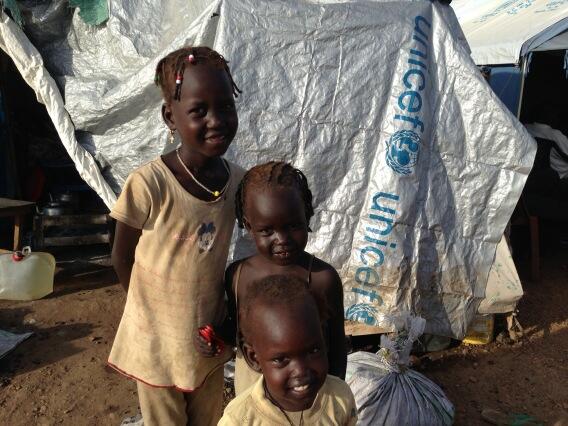
All photos © UNICEF/Kent Page
